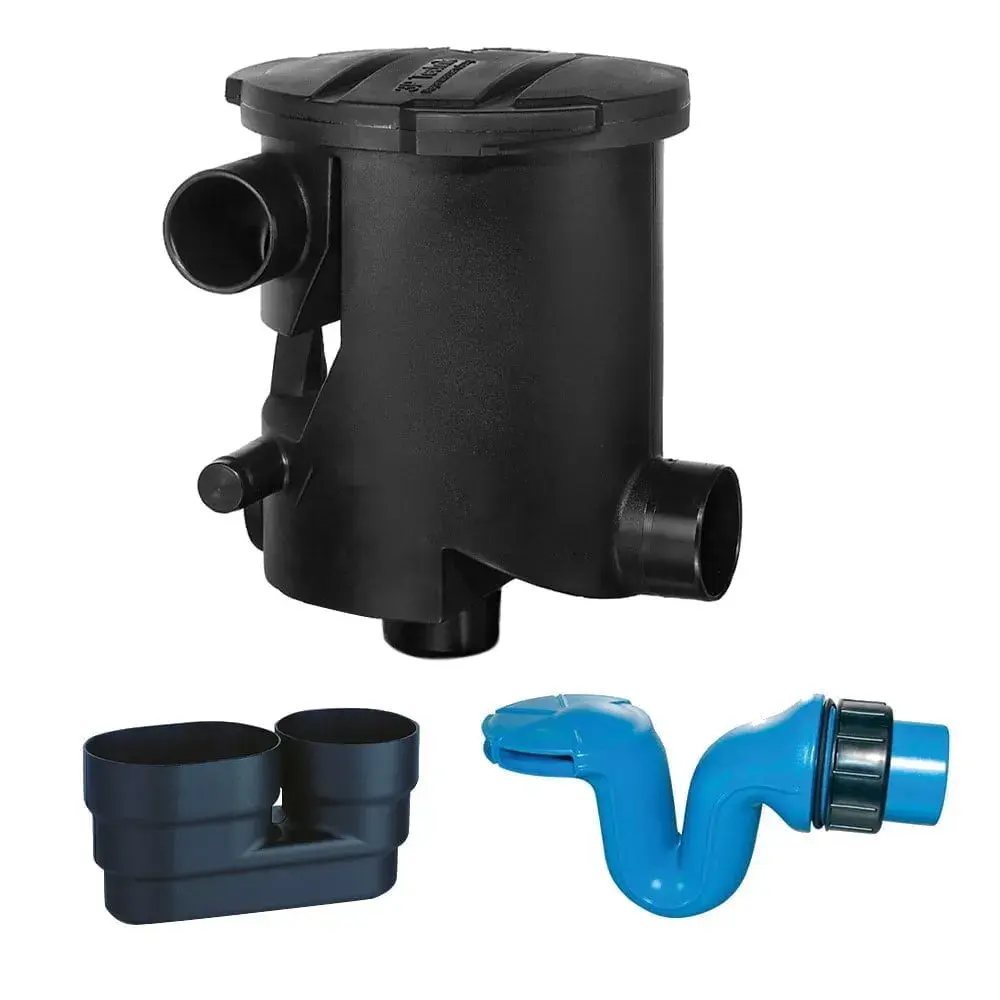
In an era marked by growing environmental awareness, many households are seeking practical ways to reduce their ecological footprint whilst managing household expenses. Rainwater harvesting emerges as a compelling solution, offering both sustainability benefits and practical advantages for domestic gardeners.
Understanding Rainwater Harvesting:
Rainwater harvesting involves the collection and storage of rainwater for non-potable purposes, such as garden irrigation, car cleaning and even toilet flushing. This practice not only conserves water but also reduces reliance on mains water supply, making it an eco-friendly choice for households.
Rainwater can be collected from house roofs, garages, greenhouses, garden sheds etc., as long as they have gutters and a downpipe.
Addressing Common Concerns:
One primary concern often revolves around space limitations for tank installation and initial investment costs. However, with the right knowledge and resources, these challenges can be overcome. Enduramaxx manufactures a range of slimline and compact rainwater harvesting systems, including a basket filter, tailored for domestic use offering efficient water storage solutions, ideal for homes with limited space.
Educational Resources:
Access to reliable information is key to successful rainwater harvesting for garden use. Resources from reputable sources like the Royal Horticultural Society (RHS) offer valuable insights into water collection, storage, and usage in gardens, ensuring optimal results for gardeners.
Most gardeners know that rainwater is considered to be better for plants as it often has a lower pH. The minerals that are sometimes found in mains water, especially in hard water areas can raise the pH of your root zone, which can affect the nutrient availability.
The RHS pledge ‘mains to rains’: water the way nature intended, sets out a number of actions, including garden irrigation ideas, that households could be adopting to conserve water. These include using a rainwater harvesting tank or water butt, placing drip-trays beneath pots to collect drainage, adding mulch around new plants, choosing the right plant for the right place, swapping paving for plants, using a watering can instead of a hosepipe, avoiding watering the lawn, adding homemade compost to the soil, using self-watering pots or baskets, and choosing permeable paving rather than hard landscaping.
Meeting Household Needs:
By emphasising the environmental benefits, such as reduced water consumption and carbon footprint, rainwater harvesting appeals to households' sustainability goals. Additionally, highlighting the potential for cost savings on water bills underscores its practical appeal, making it a win-win solution for domestic gardeners.
Doing Your Bit For Future Generations
Installing a rainwater harvesting system offers a sustainable and cost-effective solution for domestic gardeners looking to reduce their environmental impact and manage household expenses. With access to educational resources and practical solutions, households can embrace this eco-friendly practice, contributing to water conservation efforts and fostering greener lifestyles for generations to come.
Posts By Topics
- Blog (303)
- Chemical Storage Tanks (118)
- Chemical Dosing Tanks (114)
- Chemical Tanks (114)
- Water Tanks (58)
- Rainwater Harvesting Tanks (43)
- Vertical Rainwater Tanks (31)
- Vertical Storage Tanks (31)
- Cone Bottom Tanks (19)
- Conical Cone Tanks (18)
- Rainwater Harvesting (17)
- Water Bowsers (15)
- Horizontal Tanks (14)
- Potable Water Tanks (13)
- Farming (9)
- Case Studies (8)
- Industrial Storage Tanks (7)
- Liquid Fertilser Storage Tanks (6)
- WRAS Approved Potable Tanks (6)
- Wine and Beer Production (6)
- Horizontal Transport Tanks (5)
- Microbrewery (5)
- Rainwater (5)
- Category 5 Break Tanks (4)
- Cider Production (4)
- Mixer Tanks (4)
- Molasses Tanks (4)
- Polyethylene tanks (4)
- Rainwater Filter Kits (4)
- SPECIALIST & BESPOKE TANKS (4)
- Bunded Tanks (3)
- Slimline Tanks (3)
- WRAS Approved (3)
- Clarification Tanks (2)
- Crosslinked Polymer Tanks (XLPE) (2)
- Fertiliser Tanks (2)
- Sump Tanks (2)
- Tank Installation (2)
- Water Butt (2)
- underground water tanks (2)
- ACCESSORIES & FITTINGS (1)
- ATV & UTV SPRAYING UNITS (1)
- Above Ground Effluent Tanks (1)
- Bespoke Tank Frames (1)
- Category 5 Turret (1)
- Caustic Soda Tanks (1)
- Closed Top Bunded Tanks (1)
- Craft beer (1)
- Effluent Tanks (1)
- Enduramaxx (1)
- Ferric Chloride Tanks (1)
- Fire Safety Regulations (1)
- Fire Sprinkler Water Storage Tanks (1)
- Industrial Water Tank (1)
- Open Top Bunded Tanks (1)
- Open Top Cone Tanks (1)
- Open Top Vertical Tanks (1)
- Polyethylene Potable Water Tanks (1)
- Polyvinylidene Fluoride (PVDF) Tanks (1)
- Polyvinylidene Fluoride Tanks (PVDF) (1)
- Pressure Washers (1)
- Pro Series Spot Sprayers (1)
- RWH (1)
- Sodium Hydroxide Storage Tanks (1)
- Sprayer Fill-up Tanks (1)
- Uncategorised (1)
- liquid fertiliser tank (1)
Sign up to the newsletter
enduramaxx.marketing
Related Posts
What You Need To Consider When Choosing A Large Water Butt
Why you need a large water butt Alarge water butt is one of the most effective ways to harvest...
Why We Need More Water Storage Solutions For a Sustainable Future
With more people becoming aware of their environmental impact and how it affects the planet, they...
Drinking Water Regulations: What You Need To Know
If you have a private water supply, then it is essential that you are up to date with the drinking...
Related Products
From £1,080.00 inc. VAT
£900.00 exc. VAT
From £1,344.00 inc. VAT
£1,120.00 exc. VAT
From £768.00 inc. VAT
£640.00 exc. VAT
£480.00 inc. VAT
£400.00 exc. VAT






